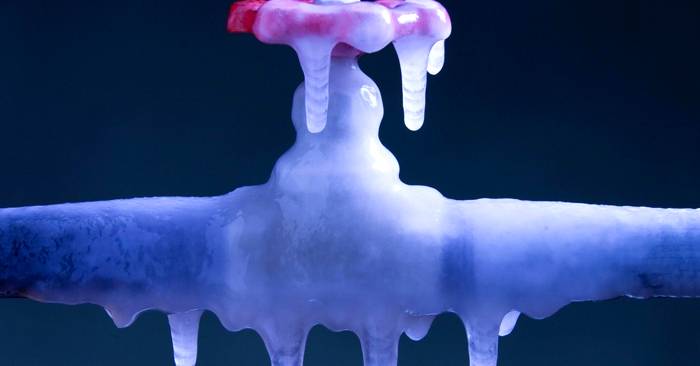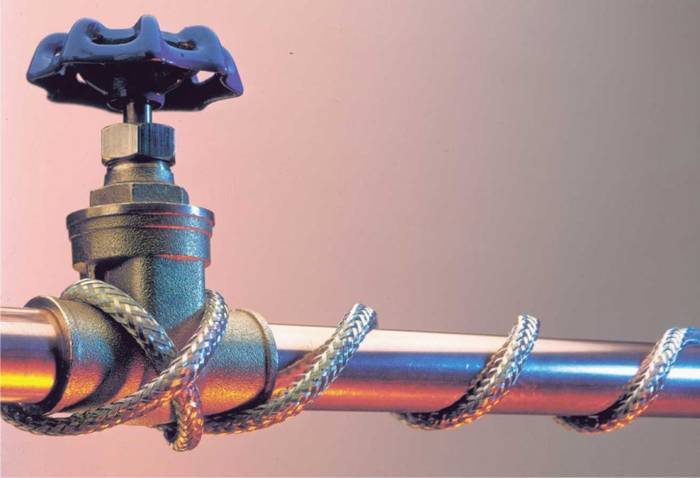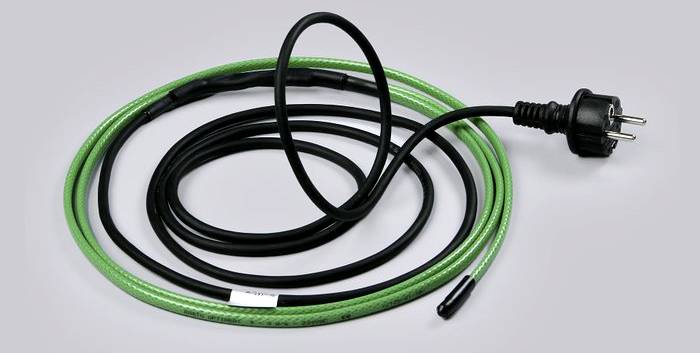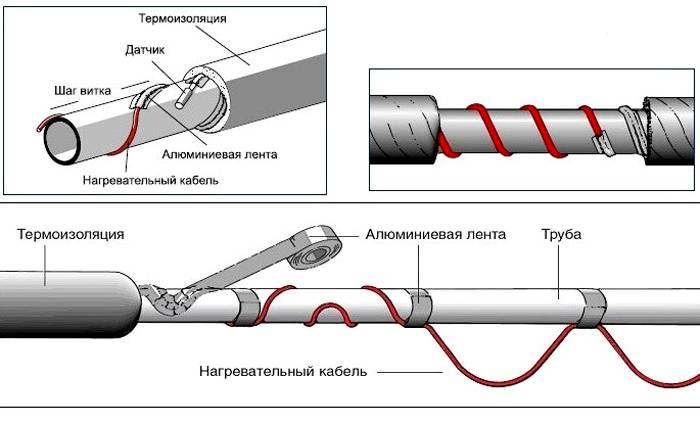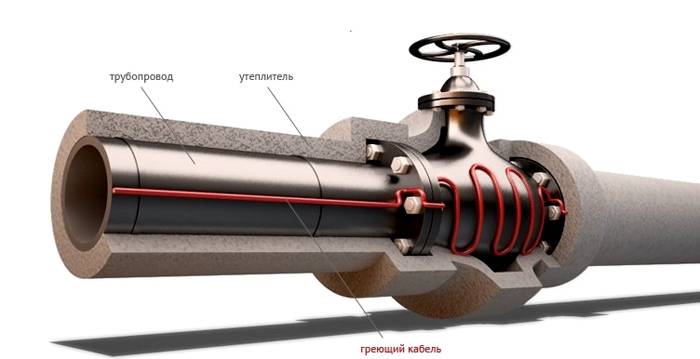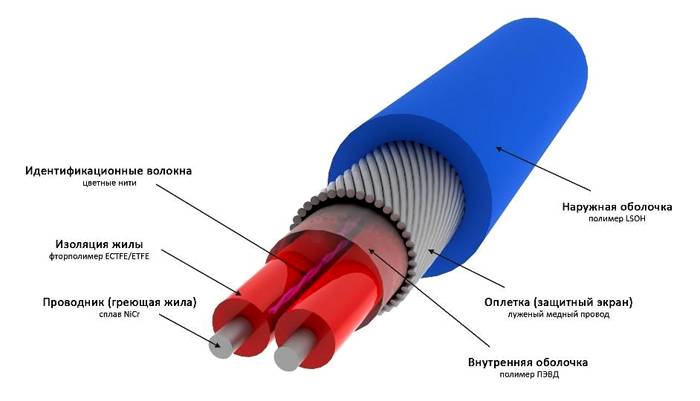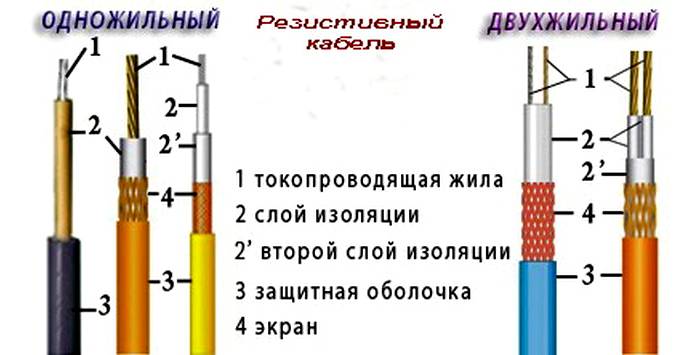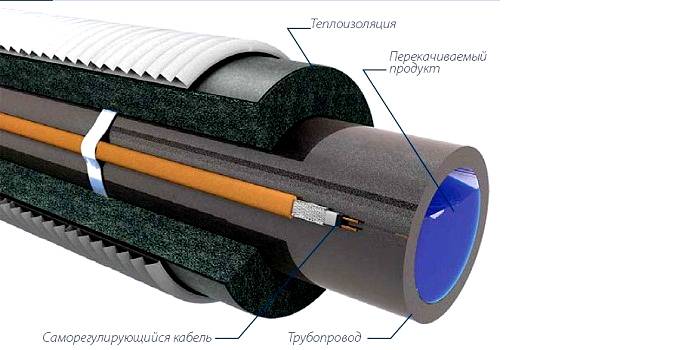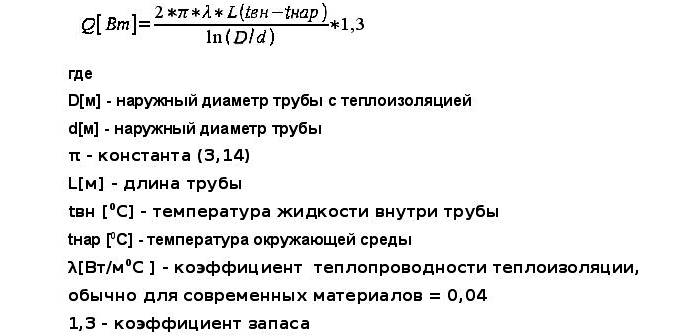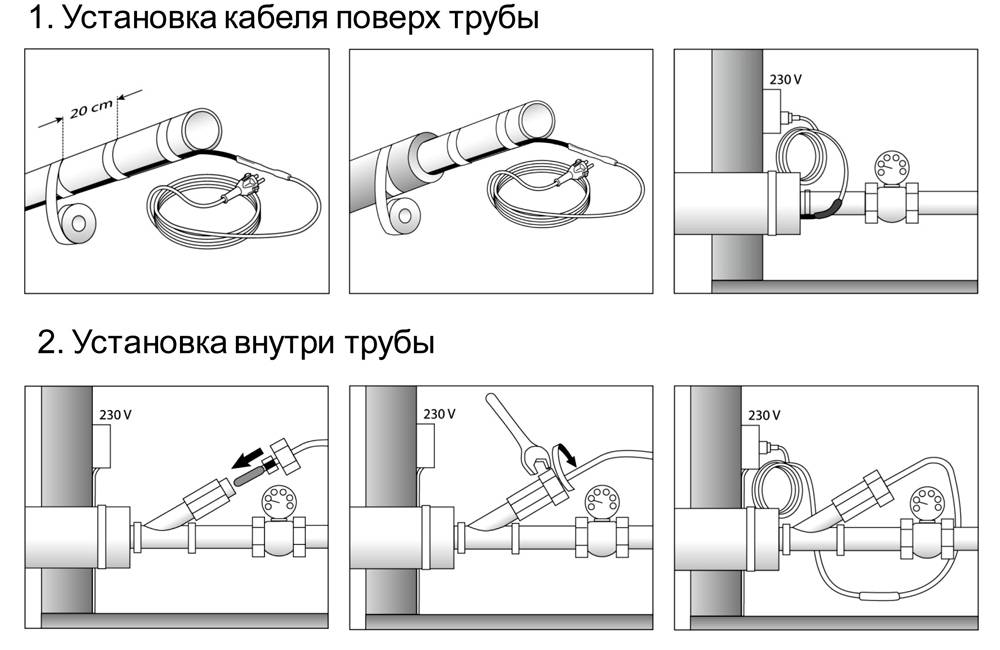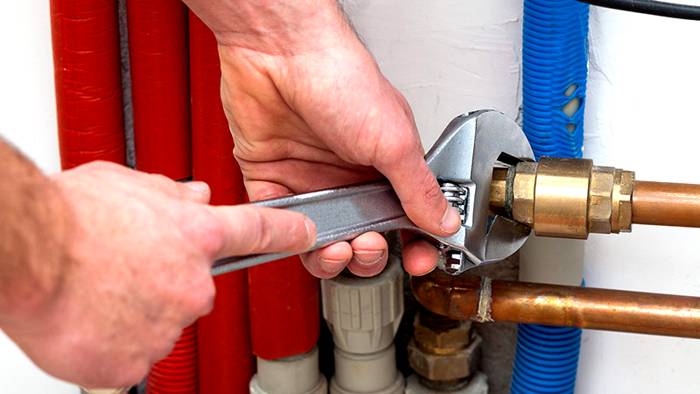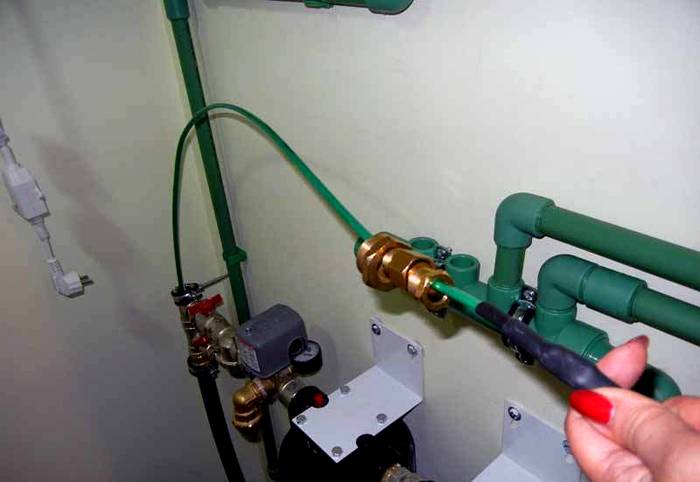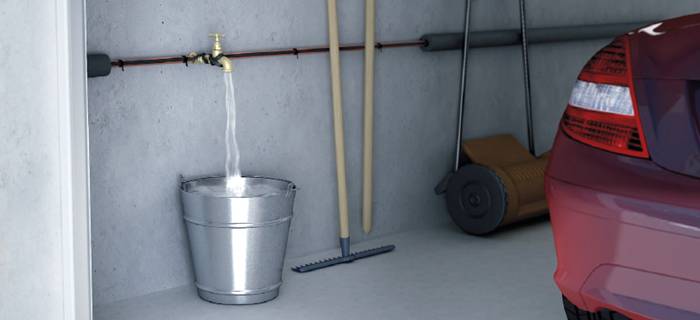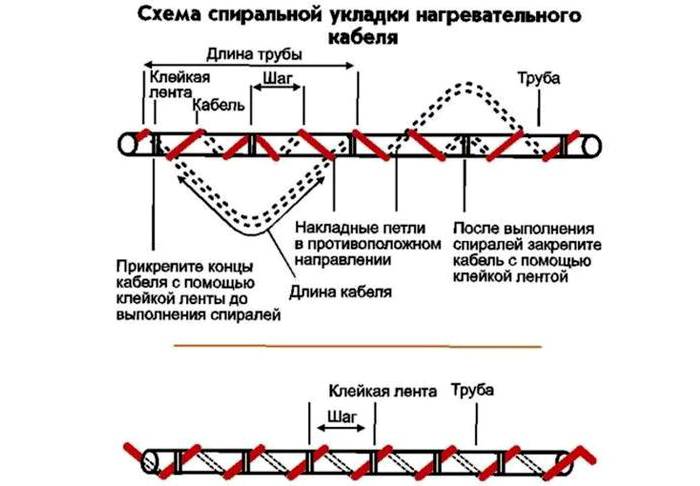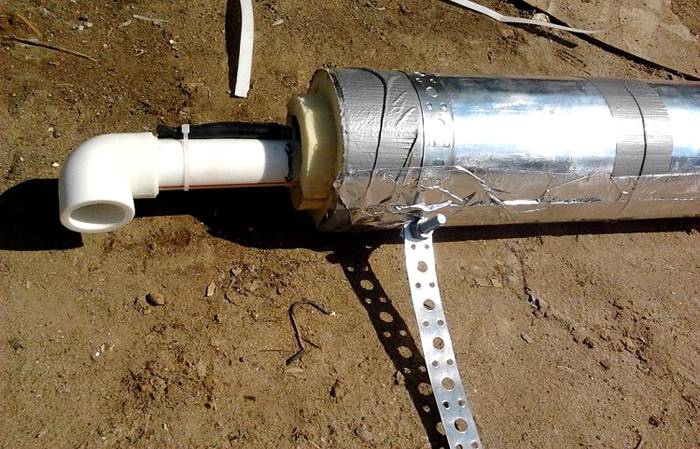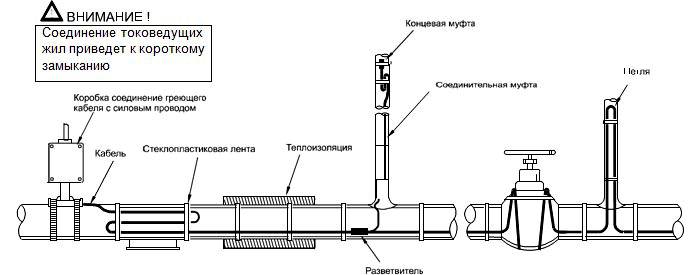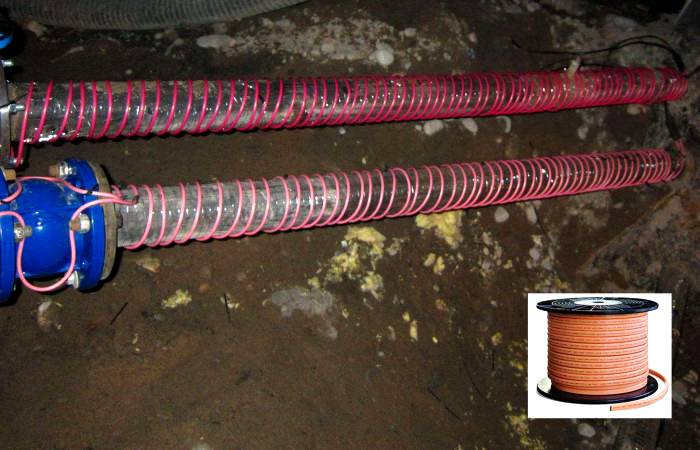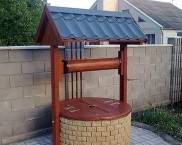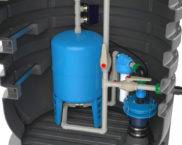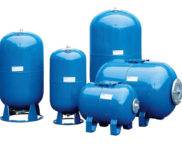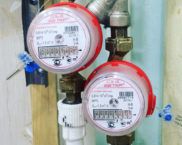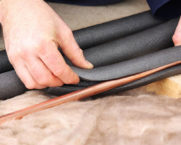Water pipe heating cable: what is it and how to install it
Owners of their own houses with an individual water supply system in winter are faced with the problem of freezing pipeline sections. This situation slows down the flow of water, and can lead to breakage of the pipe or the entire heating system. To avoid such problems, you can install a cable to heat the water pipe.
The content of the article
Water pipe heating cable: design and function
For a long time, special wires have been used to heat the sewerage and water supply system. A heating cable is a conventional wire with an electrical resistance adjustment that is used to control heating of the cable.
It is used in open pipe sections to avoid the formation of an ice plug. When the air temperature drops below minus 5 degrees Celsius, the wire must be connected.
Note! If you turn on the wire after the freezing of a section of the water supply system, it will take a certain time until the ice turns into water, while the pressure of the liquid in the system will be very weak.
Heating system composition
Such systems include not only the cable itself, which regulates the water temperature, but also the following elements:
- a starting system, which is usually placed in a control cabinet;
- aluminum strips for insulation;
- thermal insulation of the water supply;
- the wire itself;
- device for temperature control.
The complete set may vary depending on the technical characteristics of the system.For example, if the heating of the water supply pipe against freezing consists of a two-wire self-regulating system, then an additional regulator is not required. Such a device is connected to the system using a special connecting element that automatically regulates the heat level.
Advantages of a pipe heating system
The pipe heating system is used because it has a number of advantages:
- water does not freeze;
- the required liquid temperature is always maintained;
- there will be no stagnation of denser liquids, for example, oil;
- no crystallization of solids occurs;
- hot water does not cool down while it flows through the water supply;
- thickening is not allowed;
- fluid flow is constant and continuous;
- there is no need to deeply place the pipes under the soil layer;
- no replacement and repair of the water supply system is required after cold weather.
Note! A heated water pipe has many advantages and is inexpensive.
Types of pipeline heating
Heating wires are classified according to the heat dissipation scheme into self-regulating and resistive systems. Each of them has its own characteristics.
Resistive option for heating
The principle of operation of such a cable is to heat an insulated metal core, and it is important to monitor the temperature in order to prevent combustion of the heating element.According to the type of construction, such a cable can be with one core or two. The first option is rarely used, since it requires closing the circuit. When heating pipes, such a system is sometimes not possible at all.
A two-core wire is more practical - one end of the cable is connected to the network, a contact sleeve is installed on the other, which ensures closure.One conductor can serve as a source of heat, then the second serves only for the necessary conductivity. Sometimes both conductors are used, increasing the power of the heating itself.
Conductors are protected by multilayer insulation, which has grounding in the form of a contour (screen). To protect against mechanical damage, the outer loop is made of a polyvinyl chloride sheath.
This system has its positive and negative sides. The first includes:
- High power and heat output, which is needed for a pipeline with an impressive diameter or with a considerable number of style details (tees, flanges, etc.)
- Uncomplicated design at an affordable cost. Such a cable for heating a water pipe with a minimum power costs 150 rubles per meter.
The disadvantages of the system include the following:
- For correct operation, it is necessary to purchase additional elements (temperature sensor, control unit for automatic control).
- The cable is sold with a certain length, and the terminal sleeve is assembled in the production environment. Do not cut by yourself.
For more economical operation, use the second option.
Semiconductor self-regulating
This system of self-regulating heating cable for water supply is completely different in principle of operation from the first option.The two conductors (metal) are separated by a special semiconductor matrix that acts as a heating source. This ensures high current conductivity at low temperatures. Moreover, when the temperature rises, electricity consumption decreases markedly.
Note! The process of self-regulation takes place at separate points along the entire length of the heating.
These features allow you to reach the highest temperatures in more vulnerable areas. Such a system of cables for heating water pipes has its advantages:
- Savings on energy consumption increase, as the system reduces power as the ambient temperature rises.
- You can buy the required length, cutting places are provided with a step of 20 or 50 cm.
There is also a negative side - the high cost of the cable itself. Even for simple varieties the price is about 300 rubles per meter, and the most "advanced" models are estimated at over 1000 rubles.
Any system can be installed inside or outside the pipe. Each technology has its own characteristics, which should be taken into account during installation.So, for the external structure, it is better to choose models with a flattened section, since a large surface of the cable will contact the pipe, which will increase heat transfer. The power limit is wide, you can pick up from 10 to 60 watts per meter.
How to calculate the required power for heating pipelines with a heating cable?
Professionals have a rather complex system for calculating the required power of the wiring system for heating water pipes. In a domestic environment, you can use a simpler method, where you should rely on several indicators:
- With internal heating, 10 W / m is sufficient.
- When outdoors, more powerful structures are used (17 or 27 W / m). Or you can use the formula below.
You can find in different stores a very different cost for such a heating system, everything will depend on the material of manufacture and the manufacturer's company, as well as on the power. For example, for a heating cable for a water supply system installed outside the pipe, the price can start from 300 rubles and more per one running meter.
Mounting options
Installation variations will depend on the method of insulation (internal or external). Let's consider several ways.
Features of installation of a heating cable for a water supply system inside a pipe
Usually this type of installation is used when pipes are already in operation and plugs are formed in frosts. Moreover, if you expect to mount a cable for heating a water pipe in a container with drinking water, then it is worth purchasing a special one that has a permit.
To enter the cable inside, a gland is required, which is not required for external installation.
To install the system inside the pipe, it is necessary to accurately calculate the length of the pipeline section that needs to be heated. The place of installation is indicated by a warning sign.
Note! All actions during internal installation must be carried out very carefully to prevent damage to the cable. At the same time, it is better to close the thread on the fittings with the factory flight one, like other sharp objects.
The most commonly used method is to install the cable on the outside of the pipe.
Video: installation of a self-regulating heating cable inside the pipe
External mounting
If you carry out quality work on the installation of the heating cable, then it will provide you with long-term trouble-free operation of the entire water supply system. To do this, you must follow the stages of work:
- Preparatory. Clean all pipes from dirt and rust.
- Installing the cable in one of the selected ways.
The first installation option is to carry several parallel threads along the pipe, the number of which depends on the required power.The second is a spiral arrangement. This option will require high costs, therefore it is used in small sections of the water supply system.
- Secure the wire to the bottom of the pipe with a special tape.
Helpful information! Try to secure the cable further away from areas where water can pass through.
- Installation of an insulating layer, while one end ("cold") must be left outside.
- Electrical connection. If the wire itself is located far from the electrical panel, then it is better to mount a wiring box.
With proper installation, the heating system will bring you the desired result and extend the life of the water supply system.
Advice
In order for the installation to be done according to all the rules, additional conditions must be met:
- If the installation is on plastic pipes, then an additional aluminum foil layer should be made.
- Cable lengths less than 1.4 m should be mounted to pipeline valves or flanges.
- Do not allow crossing the resistive variant to avoid system breakdown (burnout).
- Check moisture protection.
You can buy any option that suits you, especially since the choice of firms and materials in stores is very wide.
For a complete picture of the installation of such a heating element on the water supply system, we suggest watching the video.



